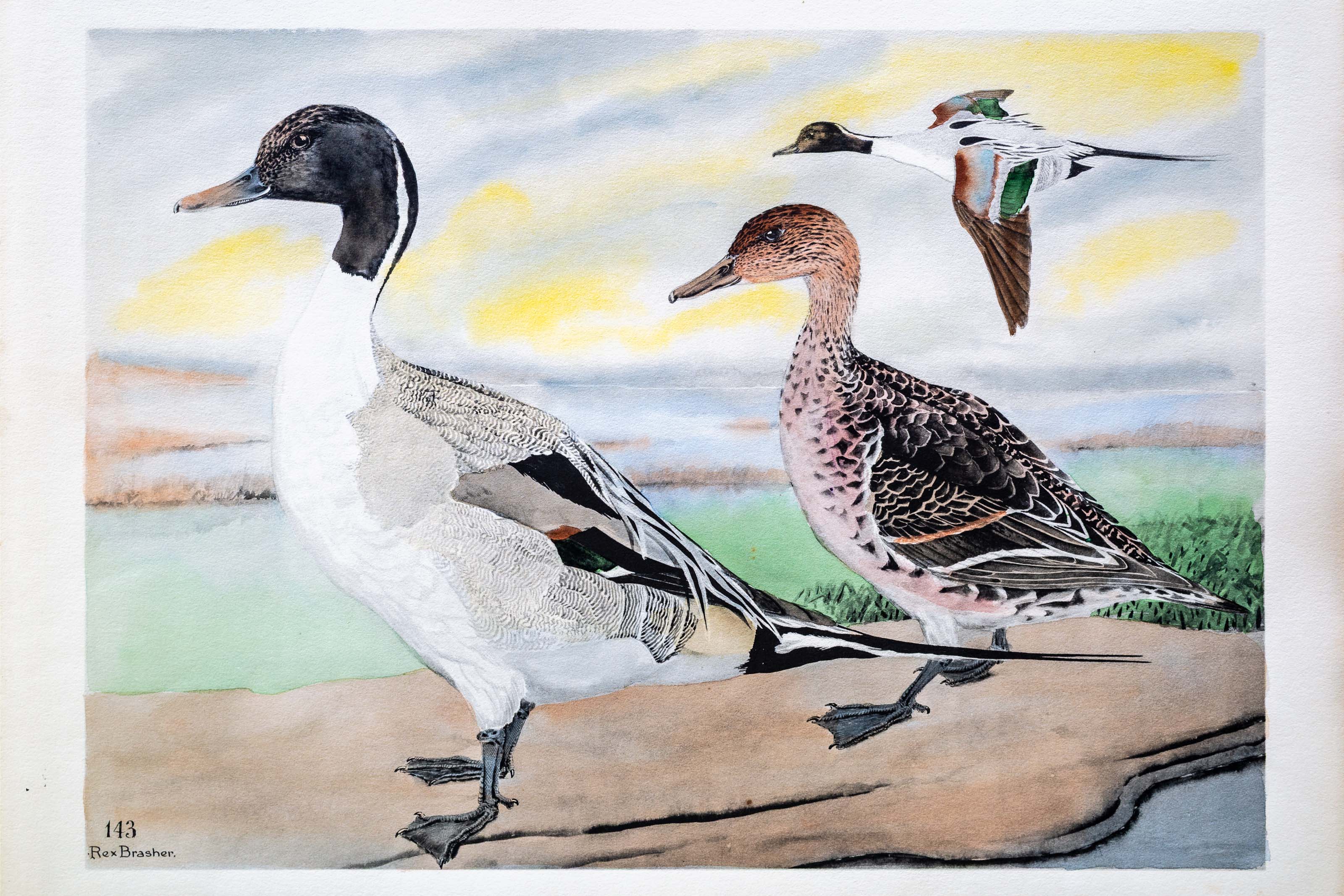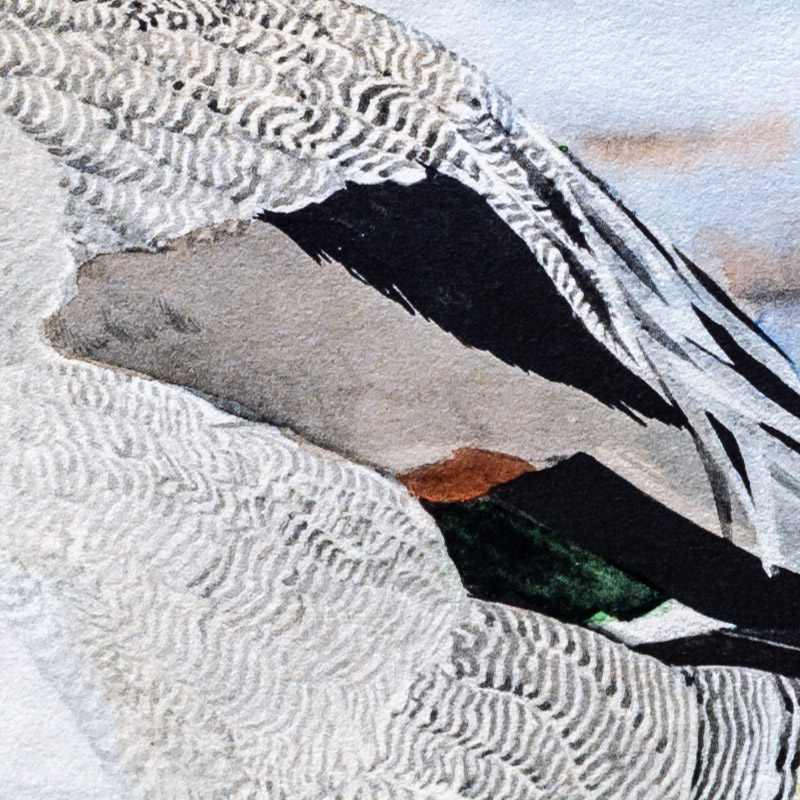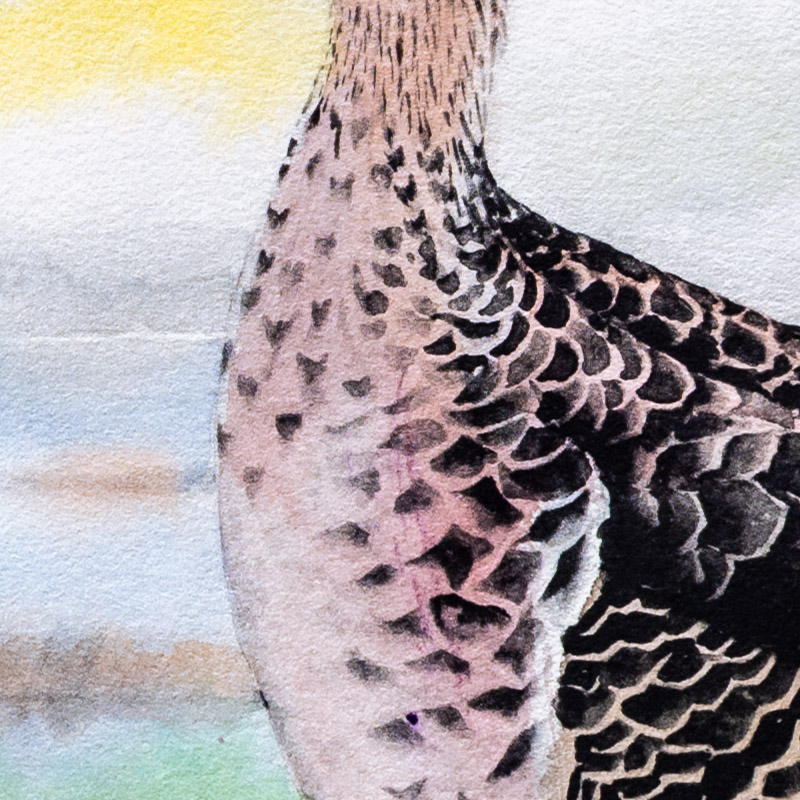






Unknown
1930
3
143
A team of dedicated board members, volunteers, and student interns has published every page in Volume 9. This volume includes 360 images of paintings and lyrical descriptions of birds, now available online for everyone to enjoy anywhere in the world. This is a monumental task. Each volume requires approximately 400 hours to photograph, edit, transcribe, catalog, and publish online. We need your support to complete this work.
If you're tech-savvy, have a good eye, are meticulous with details, and love structured data, please consider volunteering by emailing us at hello@rexbrasher.org.
We encourage all bird lovers and supporters to consider a monetary donation to support our mission to make Rex's work available for everyone. You can provide a one-time or recurring donation online.
If the rotund sportsman who wishes bay window reduction will try "walking up" PINTAILS in the low country of southern Jersey, more encouraging results will be obtained than by following dietetic ads. Numbers of these Beau Brummels of the Duck world winter in the sheltered ponds and creeks around Cape May. It is possible to walk within range of birds feeding under banks but (a very emphatic but) that is only half the battle. — So swift, alert and vigorous is the getaway that only the accurate snap shots get their bird, and only about two out of five at that. However, window size is reduced — tramping in meadow country is hard work.
I remember spending more than one day after Pintails (and corraled only a large goose egg!) but like the whaling captain I had a fine walk. Looking backward now I am glad I didn't get any — for the Pintail is a gentleman!
After meals of mussels, marine insects, beetles, roots and seeds are eaten, they are fond of settling on some open sand bar, sunning and preening. For hours they rest and absorb sunrays in these favorite spots, conversing in mellow quacks about maritime affairs.
NEST: in hollow of dry ground; lined with dry herbage and down, within a mile of water.
EGGS — 5 to 12; dull buff to pale olive.
North America, breeding from Bering Sea to James Bay, southward to about latitude 40.